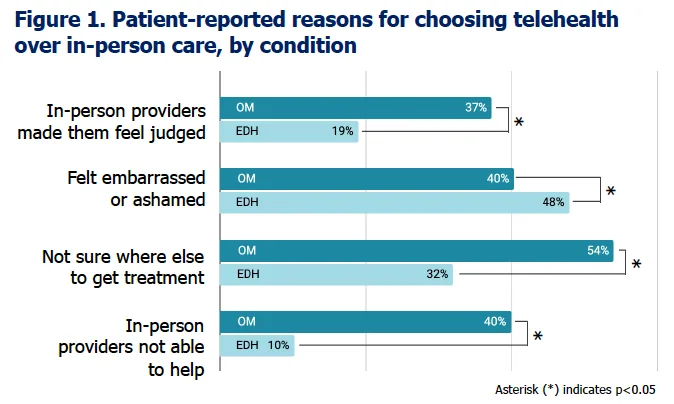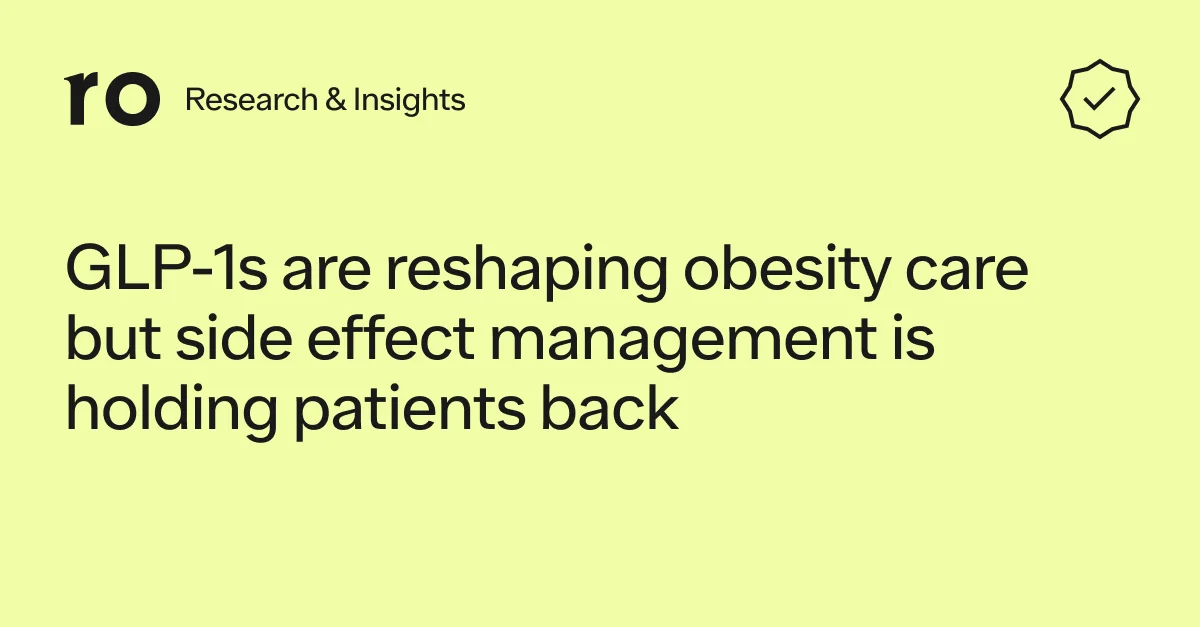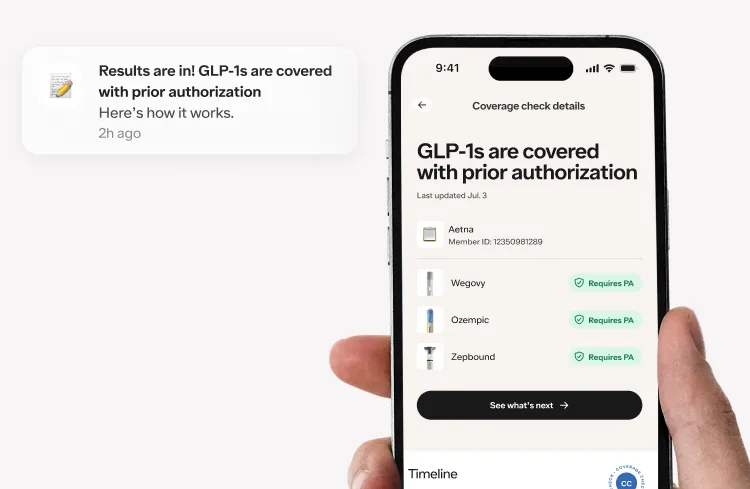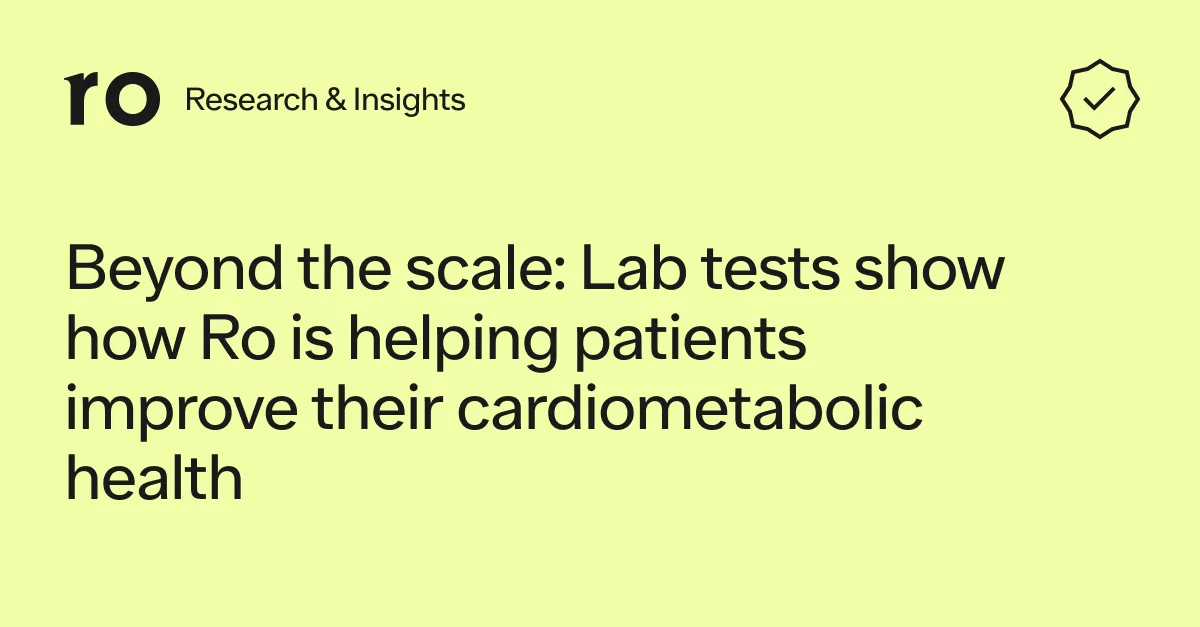Here's what we'll cover
Here's what we'll cover
Here's what we'll cover

Patients living with stigmatized conditions like obesity often feel uncomfortable seeking care in an in-person setting. This is for good reason — over 30% of Ro’s patients said that they had been previously teased, treated unfairly, or discriminated against due to their weight when seeking in-person care.
These experiences are not only inhumane but they can create dangerous barriers for people to effectively address their weight and reach their health goals. Part of Ro’s mission is to facilitate access to high-quality care for patients with conditions that have historically been stigmatized, who may be unwilling to turn to in-person services.
To understand if we are achieving this aim, we assessed why our patients are coming to Ro rather than seeking care in-person. This allows us to uncover how stigma factors into their choice and learn more about what aspects of their experience at Ro are most valuable to them.
Earlier this year, Ro, alongside some of the leading names in obesity care and research — Fatima Cody Stanford, MD, MPH, MPA, MBA, Joe Nadglowski, Damian Bialonczyk, PharmD, Ted Kyle, RPh, MBA, Elizabeth Pash, PhD, RD, LDN, and Angela Golden, DNP, FNP-C, FAANP, FOMA — analyzed the reasons that patients living with obesity, erectile dysfunction, or herpes sought care on our platform.
What we uncovered
Our results pointed to a disappointing status quo with the patient experience of in-person care and challenged us to think about how telehealth can facilitate a better experience for those seeking obesity care. Our key findings included:
People seeking care for obesity through telehealth are more likely to have experienced discrimination from in-person providers compared to those seeking care for other conditions like erectile dysfunction and herpes.
Patients seeking care for obesity also reported more difficulty finding effective care — indicating potential gaps in access to in-person providers with appropriate obesity management training, which led patients toward telemedicine options.
Younger patients are more likely to experience internal stigma (such as feeling embarrassed), in addition to external stigma (judgment) from their in-person providers.
Here are the reasons patients reported choosing telehealth over in-person care, by condition (OM = Obesity Management; EDH = Erectile Dysfunction and Herpes):

Considerations
This study shows just how deep and prevalent the internal and external stigma remains for patients seeking obesity care. Patients who want to lose weight and improve their health are turning to telehealth because of its promise to offer a better care experience — empathetic and trained providers, greater convenience, and no judgment of their health goals.
A shortage in healthcare providers with appropriate obesity management training may be further reinforcing stigma around the issue — especially in light of the fact that there were little more than 5,200 providers certified in obesity care across the U.S. in 2021.
Ro’s direct-to-patient model uses technology to enable convenient access to high-quality healthcare, regardless of where patients live — bringing obesity experts right to their smartphones or computers. The ability to access weight management care from home also helps remove the barriers of stigma and eliminates provider proximity issues.
We know this because Ro has already been able to help over 160,000 patients progress towards their weight loss goals — and we’re just getting started! Ro is always looking for new, science-backed treatments to offer our patients and we will continue to evaluate the best resources to help them reach their weight loss goals, from addressing gaps in care to constantly researching and looking inward on how we can make sure our products and services are destigmatizing the care experience.
As Ro treats more and more patients, it’s imperative that we never stop learning about the role of stigma and discrimination in healthcare and subsequently the opportunities that exist for telehealth and Ro to combat it.









